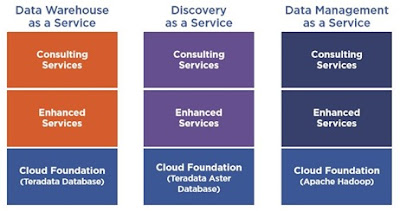Future Ready in the API economy
The world of business is software. No matter the industry vertical or business model, effective software is the key to business success. An even more important aspect of this reality is the application programming interface (API). If you are unfamiliar with this kind of geeky term, APIs are the glue that connects applications to each other and manages the virtual discussions between you and your customers. APIs are also what enables business agility and flexibility of a #FutureReady business.
“Application programming interfaces (APIs) have been elevated from a development technique to a business model driver and boardroom consideration. An organization’s core assets can be reused, shared, and monetized through APIs that can extend the reach of existing services or provide new revenue streams. APIs should be managed like a product—one built on top of a potentially complex technical footprint that includes legacy and third-party systems and data.”[1]
APIs are also at the heart of cloud computing. These are used to provision, de-provision and scale the resources needed to run the software that drives your business. The importance of software, and by extension the APIs that drive software, is evident when you compare the top Dell Future Ready cities to the top cities for software engineering and entrepreneurship capitals.Eight of the top 10
Future Ready economies are in the top ten nationally for software engineering cities. All ten of the cities highlighted as “Capitals of Entrepreneurship” are FutureReady economies. Ten of the FutureReady economies are also cities ranked as having the most high tech jobs.
APIs are also at the heart of cloud computing. These are used to provision, de-provision and scale the resources needed to run the software that drives your business. The importance of software, and by extension the APIs that drive software, is evident when you compare the top Dell Future Ready cities to the top cities for software engineering and entrepreneurship capitals.Eight of the top 10
Future Ready economies are in the top ten nationally for software engineering cities. All ten of the cities highlighted as “Capitals of Entrepreneurship” are FutureReady economies. Ten of the FutureReady economies are also cities ranked as having the most high tech jobs.
Driven by social media, mobile devices, applications, cloud and Internet of Things, the number of endpoints connecting to critical business applications is growing exponentially. This also means that a FutureReady business faces an ever-growing number of APIs—which must be governed and managed effectively. This is why products like Dell Boomi’s multi-purpose Platform as a Service (PaaS) is critical to business success. This particular platform can be used to:
- Create and publish any endpoint as an API;
- Deploy APIs on-premises or in the cloud;
- Use versioning to effectively control APIs throughout the lifecycle;
- Centrally manage and monitor web services;
- Enjoy economies of skill for increased developer productivity;and
- Accelerate time to value and reduce total cost of ownership.
Being cloud-based, the Dell Boomi API Managementservice provides faster implementation and shorter time to value, as well as lower upfront costs and total cost of ownership (TCO). This solution also delivers a centralized location to manage all of the company’s APIs, no matter how your APIs are created.
This high level overview shows that beyond a doubt, being #FutureReady means being software ready. And software ready, by extension, means that FutureReady Enterprises must be ready to manage APIs.
( This post was written as part of the Dell Insight Partners program, which provides news and analysis about the evolving world of tech. To learn more about tech news and analysis visit Tech Page One. Dell sponsored this article, but the opinions are my own and don’t necessarily represent Dell’s positions or strategies. )
( Thank you. If you enjoyed this article, get free updates by email or RSS - © Copyright Kevin L. Jackson 2015)
This blog has been verified by Rise: Re9cb99744b65eb009b71a970003c015e











